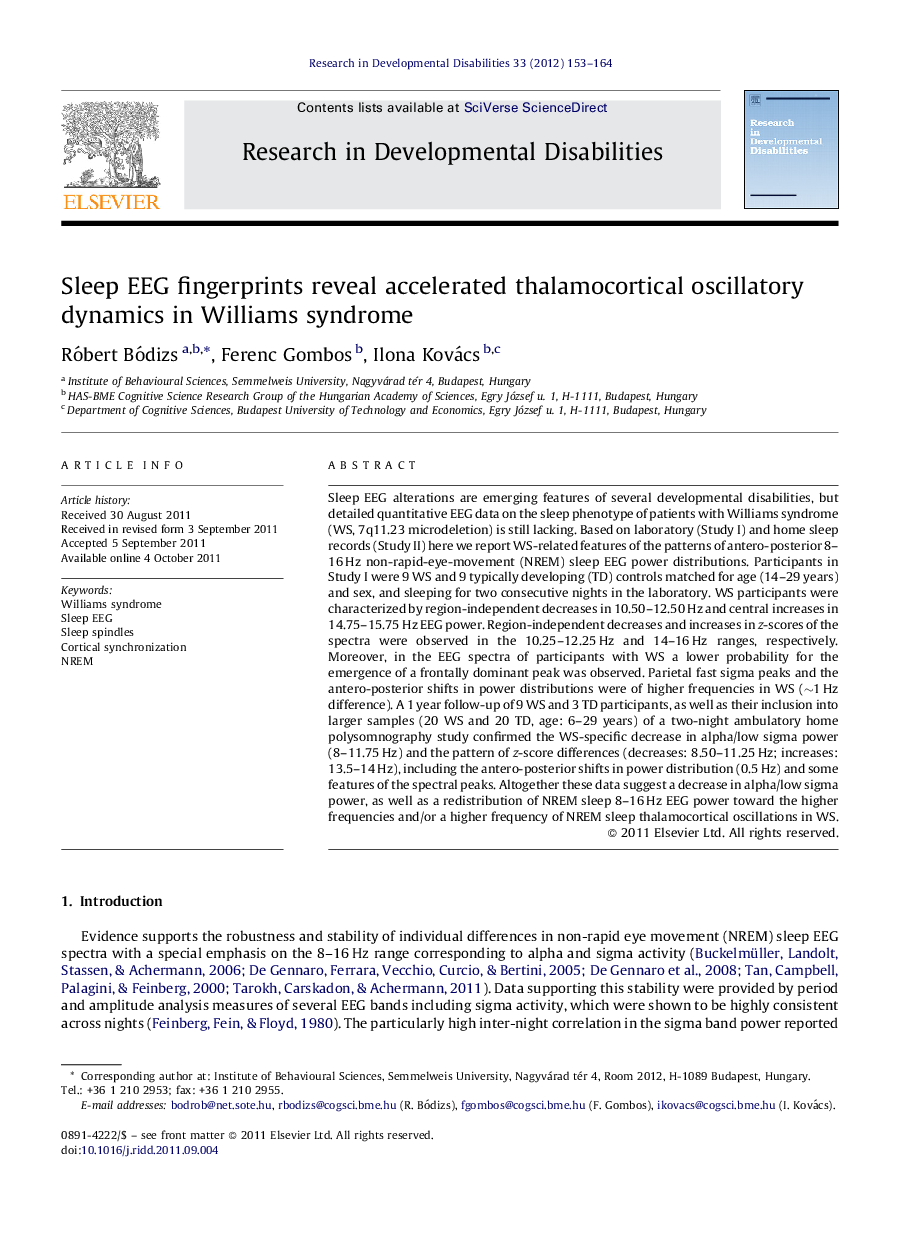| کد مقاله | کد نشریه | سال انتشار | مقاله انگلیسی | نسخه تمام متن |
|---|---|---|---|---|
| 371637 | 621935 | 2012 | 12 صفحه PDF | دانلود رایگان |

Sleep EEG alterations are emerging features of several developmental disabilities, but detailed quantitative EEG data on the sleep phenotype of patients with Williams syndrome (WS, 7q11.23 microdeletion) is still lacking. Based on laboratory (Study I) and home sleep records (Study II) here we report WS-related features of the patterns of antero-posterior 8–16 Hz non-rapid-eye-movement (NREM) sleep EEG power distributions. Participants in Study I were 9 WS and 9 typically developing (TD) controls matched for age (14–29 years) and sex, and sleeping for two consecutive nights in the laboratory. WS participants were characterized by region-independent decreases in 10.50–12.50 Hz and central increases in 14.75–15.75 Hz EEG power. Region-independent decreases and increases in z-scores of the spectra were observed in the 10.25–12.25 Hz and 14–16 Hz ranges, respectively. Moreover, in the EEG spectra of participants with WS a lower probability for the emergence of a frontally dominant peak was observed. Parietal fast sigma peaks and the antero-posterior shifts in power distributions were of higher frequencies in WS (∼1 Hz difference). A 1 year follow-up of 9 WS and 3 TD participants, as well as their inclusion into larger samples (20 WS and 20 TD, age: 6–29 years) of a two-night ambulatory home polysomnography study confirmed the WS-specific decrease in alpha/low sigma power (8–11.75 Hz) and the pattern of z-score differences (decreases: 8.50–11.25 Hz; increases: 13.5–14 Hz), including the antero-posterior shifts in power distribution (0.5 Hz) and some features of the spectral peaks. Altogether these data suggest a decrease in alpha/low sigma power, as well as a redistribution of NREM sleep 8–16 Hz EEG power toward the higher frequencies and/or a higher frequency of NREM sleep thalamocortical oscillations in WS.
► Decreased NREM sleep EEG alpha/low sigma activity is a prominent feature of WS.
► Frontally dominant NREM sleep EEG sigma spectral peaks are scarce in WS.
► NREM sleep EEG spectral power is redistributed from 8–12 Hz to 13–16 Hz in WS.
► The 8–16 Hz NREM sleep EEG spectral peaks are of higher frequency in WS.
► Antero-posterior shifts in 8–16 Hz NREM EEG emerge at higher frequencies in WS.
Journal: Research in Developmental Disabilities - Volume 33, Issue 1, January–February 2012, Pages 153–164